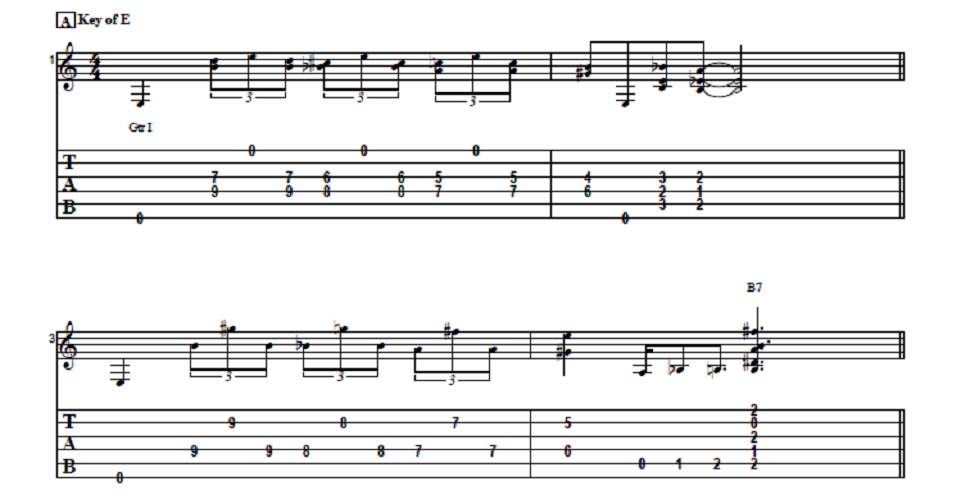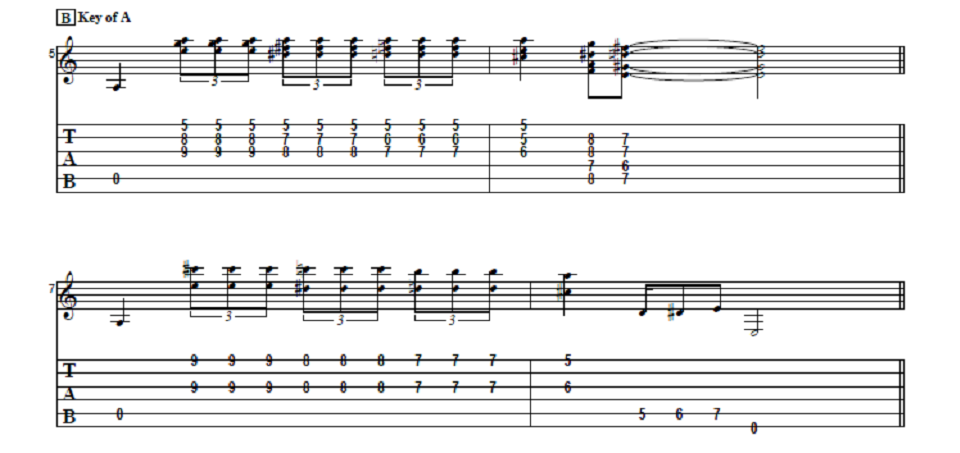Learn to play four easy blues turnarounds for beginners from Guitar Control instructor Darrin Goodman. Be sure to get the free tabs to go along with the step by step video instruction.


Introduction
Hey everybody how’s it going? This is Darrin with GuitarControl.com bringing you this video lesson. Today I want to show you how to play four, somewhat easy, beginner turnarounds for 12 bar blues. So be sure to click on the link in the description for the tabs and let’s get close up and take a look.
Blues Turnarounds – Key Of E
Alright so the first two we’re going to look at are in the key of E. So the first one here we’re going to come up here and we’re going to put your put your third finger onto the ninth fret of the D string and your first finger onto the seventh fret of the G string and we’re gonna hit the low E string on the downbeat of one. So this is a quarter note and then we’re going to strum the D and G strings and then the open high E string… and then back to the D and G… Then you just simply move that shape down a half step and strum the D and G strings then the open high E string and move it down a half step again and then the open low E string. And then we’ve got this shape here that’s like your B7 chord; so I’m on the third fret of the A string with my second finger, second fret of the D string with my first finger and then the third fret of the G string with my third finger and we’re going to strum that and then just move the shape down a half step… and that’s the whole turnaround. All right so the next one we’re going to look at I’m going to bring our second finger and you could use your first and second finger but for me it just feels kind of a little bit more natural to do it this way. So I put my second finger here on the ninth fret of the D string and my third finger on the ninth fret of the B string and now we’re going to hit the open low E string and then the D string and then we’re going to move that shape down a half step and pick it the same way and move it down a half step again; so now we’re on the seventh fret and then we’re going to move the note on the D string down a half step with a note on the B string down a whole step. So now my first finger is on the fifth fret of the B string and my second finger is on the sixth fret of the D string and we just hit those simultaneously… Now when I pick this I like to hybrid pick it so I’m using my guitar pick to hit the low E string and then the D string and then on the B string I’m plucking it with my second finger… Then we follow this with the open A string to the first fret, to the second fret and then B7. So for B7 I’m on the second fret of the A string with my second finger and the first fret of the D string with my first finger, the second fret of the G string with my third finger, the B string is open and I’m on the second fret of the high E with my fourth finger…
Blues Turnarounds – Key Of A
All right so these next two here we’re going to look at are in A and for the first one here this one is a little bit more challenging. So my first finger is on the fifth fret of the high E string and my third finger is on the eighth fret of the B string and my fourth finger is on the ninth fret of the G string. So we start off with the open A string as a quarter note and then we’re going to strum the G, B and high E strings together at the same time, so this is like triplets, so it’s; one triple-it and then we’re going to move these two notes down a half step. So now my first finger stays on the fifth fret of the first string, my third finger is going to the seventh fret of the B string and my fourth finger is going to the eighth fret of the G string as triplets again. Now we’re going to move them down again and so when I move down here instead of coming like this, which really kind of cramps my fingering, so I just switched which fingers and I’m using so my first finger still stays here on the fifth fret of the high E string, my second finger goes to the sixth fret of the B string and my third finger to the seventh fret of the G string… And then finally we’re going to uh barre our first finger across the fifth fret on the high E and B strings and then second finger onto the sixth fret of the G string and that’s a quarter note, it’s the downbeat of the second measure, so far we’ve got… so this one’s a little bit more challenging. So after we hit this on the downbeat of one then we’re going to come up here to an F9; so if we take that shape that we did down here for the B7 and we just move it all the way up so our second finger is on the eighth fret of the A string, first finger is on the seventh fret of the D string, third finger is on the eighth fret of the G string and my fourth finger is on the eighth fret of the B string… and then we just move that shape down a half step so it’s E9. So the whole thing… All right and then finally we have we have one that is actually similar to the second one that we did, so it’s basically everything is a fourth higher. So we’re going to start off with your third finger on to the ninth fret of the high E string and second finger onto the ninth fret of the G string and we’re gonna hit the A string as a quarter note; so one and then we’re going to play just the B and E strings together. So again I’m using hybrid picking here; so I’m picking the G string with the guitar pick and then I’m using a finger to pick the high E string, I’m using my second finger. So we’ve got and this is triplets also and then we just move down a half step, half step again, so now we’re on the seventh fret and then finally we move down we’re on the sixth fret of the G string and the fifth fret of the high E string… Now after that we simply come up to the A string and we’re going to start on the fifth fret we’re gonna from the fifth fret to the sixth fret to the seventh fret and then the open low E string…
Conclusion
All right so there you have it, four somewhat easy, blues turnarounds that hopefully you can incorporate this into your playing. Now the thing that’s nice about these is that you can change the timing and kind of make them your own or change the tempo or make some notes last longer, there’s all different kinds of things you can do with this to kind of modify it a little bit and change it up make it your own. So if you like this lesson be sure to give me a thumbs up and leave a comment down below if you have any questions about this or other guitar related topics. If you have not already done so please subscribe to the channel and hit that notification bell so you don’t miss any of the content that we upload throughout the week. Well that is all I have for you today. Thanks for watching and have a great day.



